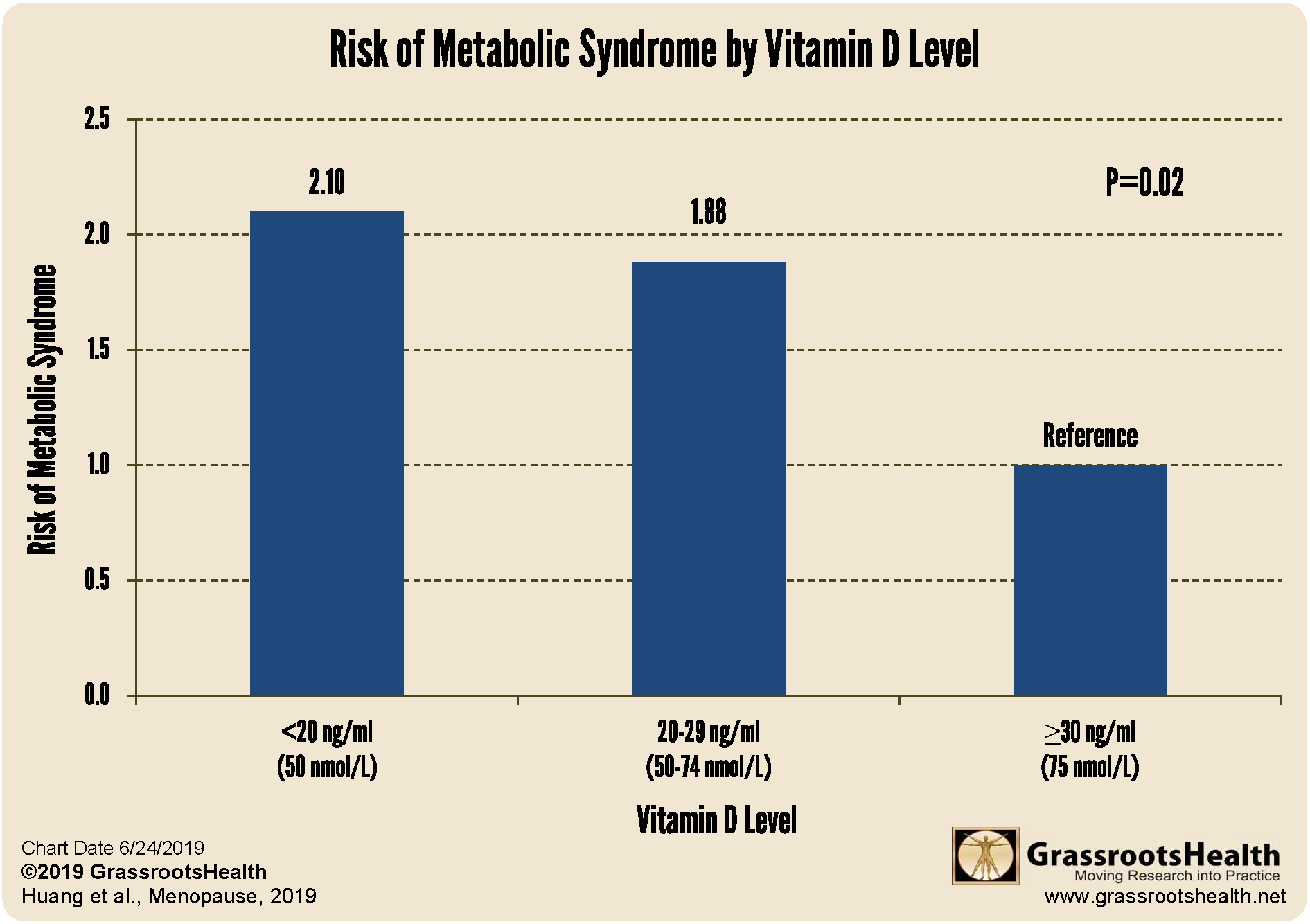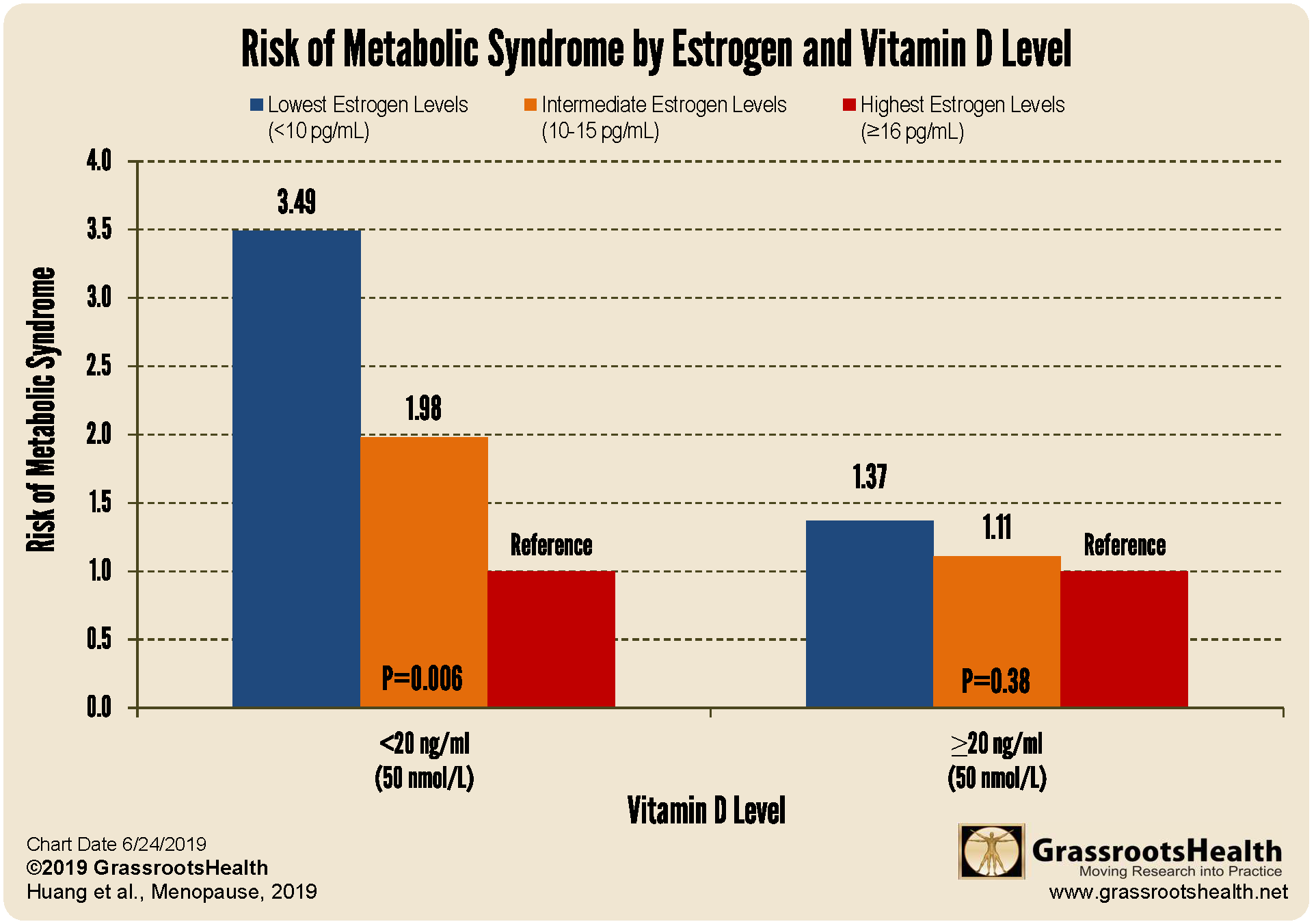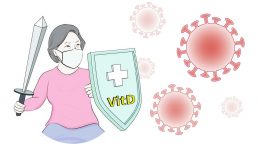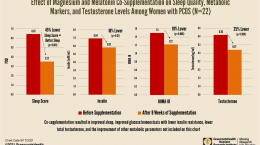Published on June 25, 2019
 Metabolic syndrome is a group of risk factors that occur together and increase your risk of heart disease, stroke, and type 2 diabetes. Having at least three of the following risk factors could indicate metabolic syndrome: high blood pressure, high blood sugar, high triglyceride levels, low HDL cholesterol levels, and excess body fat around the waist. Age and estrogen loss have been strongly associated with metabolic syndrome, which affects approximately 30-60% of postmenopausal women worldwide.
Metabolic syndrome is a group of risk factors that occur together and increase your risk of heart disease, stroke, and type 2 diabetes. Having at least three of the following risk factors could indicate metabolic syndrome: high blood pressure, high blood sugar, high triglyceride levels, low HDL cholesterol levels, and excess body fat around the waist. Age and estrogen loss have been strongly associated with metabolic syndrome, which affects approximately 30-60% of postmenopausal women worldwide.
This month (June 2019), results from a study assessing the association between vitamin D and estrogen with metabolic syndrome were published. This study included 616 postmenopausal women aged 49-86 years residing in China.
What were the findings of the study?
Both vitamin D and estrogen levels were independently associated with risk of metabolic syndrome. Specifically, women with vitamin D levels less than 20 ng/ml (50 nmol/L) had more than two times the risk compared to women with levels at or above 30 ng/ml (75 nmol/L) (P=0.02). Women with the lowest estrogen levels (less than 10 pg/mL) had roughly 1.7 times the risk compared to women with the highest estrogen levels (16 pg/mL or above) (P=0.04).
The research team also found that among women with vitamin D levels less than 20 ng/ml, those with the lowest estrogen levels had almost 3 ½ times higher risk compared to women with the highest estrogen levels (P=0.006). However, there was no significant association among women with vitamin D levels at or above 20 ng/ml. This suggests a synergistic role between estrogen and vitamin D such that those with low levels of both vitamin D and estrogen are particularly at risk for metabolic syndrome.
How do I know if my vitamin D levels are supportive of good health?
Make sure you know your vitamin D level and are taking daily steps to keep it at a level of 40-60 ng/ml (100-150 nmol/L). Find out your levels today! Log on to the shop (click the link below) to get your tests and see for yourself if your levels can be improved.
Make sure you track your results before and after, about every 6 months!
Click Here to Access the Shop Page
How can I track my vitamin D intake and nutrient levels?
To help you track your nutrient intake and nutrient levels, GrassrootsHealth has created an online tracking system called myData-myAnswers. You can track any of your supplemental and dietary nutrient intakes to see how they impact your levels and overall health. Check it out today!









